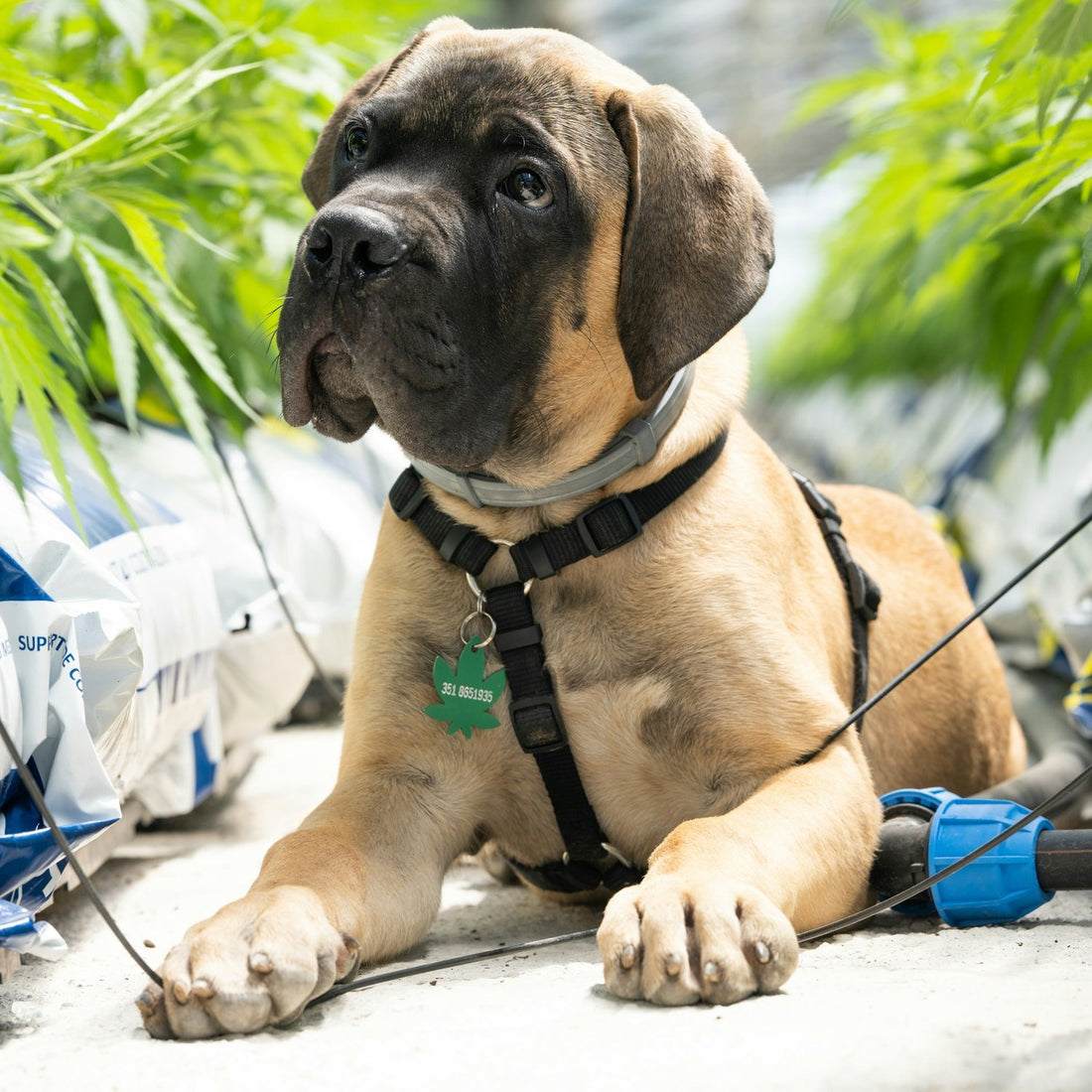
Cannabis and Dogs: A Comprehensive Analysis
Share
Understanding Cannabis
Cannabis is a plant that contains over 100 different chemical compounds known as cannabinoids. The two primary cannabinoids are:
-
Tetrahydrocannabinol (THC): The psychoactive component that produces the "high" associated with marijuana use.
-
Cannabidiol (CBD): A non-psychoactive compound often linked to therapeutic benefits.
Cannabis Use in Dogs
The application of cannabis in veterinary medicine, especially for dogs, is still a developing field. Reports from pet owners and veterinarians have highlighted both potential benefits and risks, prompting an increase in scientific investigation.

Potential Benefits of Cannabis for Dogs
-
Pain Management: Chronic pain, particularly from conditions like arthritis, may be alleviated by CBD, according to anecdotal evidence and preliminary studies.
-
Anxiety Reduction: Many pet owners report a decrease in anxiety in their dogs when using CBD, which can be particularly helpful during stressful situations like thunderstorms or fireworks.
-
Seizure Control: Some evidence suggests that CBD may help reduce the frequency and severity of seizures in dogs with epilepsy.
-
Anti-inflammatory Effects: CBD is believed to have anti-inflammatory properties that could benefit dogs with conditions involving inflammation.
Risks and Concerns
-
THC Toxicity: Dogs are significantly more sensitive to THC than humans. Even small amounts can lead to severe toxicity, with symptoms such as:
-
Lethargy
-
Vomiting
-
Dilated pupils
-
Incoordination
-
Drooling
-
Tremors or seizures
-
-
Accidental Ingestion: With the growing availability of cannabis edibles and products, there has been an increase in accidental ingestion by dogs. This can result in emergency veterinary visits and can be life-threatening in severe cases.
-
Lack of Regulation: The cannabis industry, especially products aimed at pets, is poorly regulated. This can lead to significant variability in the quality and concentration of CBD and THC, making safe dosing challenging.
Signs of Cannabis Toxicity in Dogs
Recognizing the signs of cannabis toxicity in dogs is crucial for timely intervention. Symptoms can appear within minutes to hours after ingestion and include:
-
Altered Mental State: Disorientation, unsteadiness, and unusual behavior.
-
Gastrointestinal Distress: Vomiting and diarrhea.
-
Cardiovascular Symptoms: Slow or rapid heart rate.
-
Respiratory Issues: Slow or difficult breathing.
-
Neurological Symptoms: Tremors, seizures, and hypersensitivity to touch or sound.
Treatment for Cannabis Toxicity
Immediate veterinary care is essential if a dog is suspected of ingesting cannabis. Treatment typically involves:
-
Decontamination: Inducing vomiting or administering activated charcoal to prevent further absorption.
-
Supportive Care: Intravenous fluids to maintain hydration, medications to control symptoms (such as anti-nausea drugs or anticonvulsants), and monitoring of vital signs.
Cannabis and Different Dog Breeds
The effects of cannabis can vary depending on the size and breed of the dog. Smaller dogs are more susceptible to the effects of THC due to their lower body mass, while larger dogs may tolerate higher doses but are still at risk of toxicity.
Small Breeds:
-
Chihuahua: Extremely sensitive to THC, even trace amounts can be harmful.
-
Pomeranian: Similar to Chihuahuas, they are at high risk due to their small size.
Medium Breeds:
-
Beagle: Moderately sensitive to THC; effects can be severe if ingested in large quantities.
-
Cocker Spaniel: Also moderately sensitive, requiring careful monitoring if exposed.
Large Breeds:
-
Labrador Retriever: Can tolerate slightly higher doses but still at risk for toxicity.
-
German Shepherd: Larger body mass may offer some protection, but risks remain significant with high doses.
Legal and Veterinary Perspectives
The legal status of cannabis varies widely around the world and within different states or regions of a country. This legal landscape affects the ability of veterinarians to recommend or prescribe cannabis products for pets.
-
Legal Restrictions: In many places, veterinarians cannot legally prescribe or recommend cannabis products for pets.
-
Research Needs: There is a critical need for more controlled studies to understand the safety, efficacy, and appropriate dosing of cannabis for dogs.
-
Education: Veterinarians must stay informed about the latest research and developments to provide accurate advice to pet owners.

Conclusion
The relationship between cannabis and dogs is complex and evolving. While there is potential for therapeutic benefits, the risks, particularly related to THC toxicity, are significant. Pet owners must exercise caution and consult with veterinarians before considering cannabis products for their dogs. As research progresses and regulations adapt, a clearer understanding of the safe and effective use of cannabis in veterinary medicine will emerge, benefiting the health and well-being of pets.
Visual Representation: Dogs and Cannabis
To provide a visual understanding, consider the following illustrations representing different dog breeds and sizes, highlighting their varying sensitivities to cannabis.
Small Breeds:
-
Illustration of a Chihuahua and a Pomeranian with a warning about high sensitivity to THC.
Medium Breeds:
-
Illustration of a Beagle and a Cocker Spaniel with a caution about moderate sensitivity.
Large Breeds:
-
Illustration of a Labrador Retriever and a German Shepherd with notes on their larger body mass but continued risk.
This detailed exploration underscores the importance of understanding both the potential benefits and the significant risks of cannabis for dogs, emphasizing responsible use and consultation with veterinary professionals.






























































